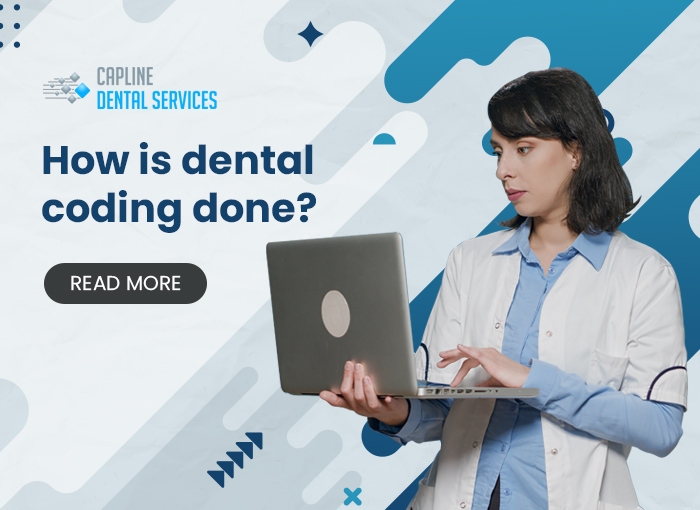For proper reimbursements, dental coding plays a crucial role. Unlike medical billing, it involves a different set of codes that is often confusing and critical. Current Dental Terminology (CDT) codes in coding achieve uniformity, specificity, and consistency. These codes get compiled by ADA (American Dental Association), which helps dental procedures accurately for better claim submissions.
What is a CDT code in dental coding?
These are a series of codes used for different dentistry and oral health operations procedures. Each procedural code is a five-digit alphanumeric code that always starts with the letter "D" followed by the numbers. Few procedures enable descriptions so that the provider's concerns can be rectified and addressed by the types of services rendered.
CDT codes are categorized in the following way:
- Diagnostic
- Preventive
- Restorative
- Endodontics
- Periodontics
- Removable prosthodontics
- Orthodontics
- Implant services
- Maxillofacial prosthetics
- Oral and Maxillofacial surgery
- Fixed prosthodontics
- Adjunctive general services
These codes get assigned by dentists, specialists, hygienists, and generalists as it restricts the use of the dental codes.
Importance of CDT code in Dental Coding
It is complex to understand the differentiation between the usage of CDT and CPT codes and is primarily dependent on the type of insurance that is availed and to which the claim is billed.
Health professionals have three types of options for insurance coverage for billing:
You must apply the CDT dental codes if you submit dental benefit claims as an in-network or out-of-network provider or if you conduct electronic communications or transactions covered by HIPAA.
The CDT Code has been established by the U.S. federal government as the national terminology that must be used when submitting dental treatment claims to third-party payers. Additionally, CDT coding has been established as a compulsory standard for the electronic communication of dental procedures.
CDT codes determined by Dental Practices
- To apply CDT codes, the patient must have access to dental insurance.
- If the patient is not eligible within the insurance plan, Insurance might not pay for the services billed.
- Most patients assume that their medical insurance coverage can also cover dental services, which is not the case.
- Dental offices must check the proper benefits and coverage for each patient’s insurance plan. Failure to do so can cause a loss in revenue and may deteriorate patient satisfaction.
- In some situations, dental treatment is administered in accordance with medical problems. Then, patients have the option of billing it to their medical insurance. However, it might be difficult to secure payment from insurance companies without thoroughly describing the procedure and persuading them that such dental services are necessary for the context of a given medical condition. Even so, these services are billed under specific medical conditions.
For example, if the patient has a cyst or ulcer in the gums and the same is incised and drained in the provider's office, the procedure can be billed as either dental or medical.
- The CDT and CPT codes for the same procedure are different. For instance, for incision and drainage of intraoral soft tissue, the CDT code is D7510, whereas the CPT code is 41800 for the same procedure.
- The patient can go to a provider if the patient has active dental coverage and can get the treatment done. Billing gets done accordingly to receive the reimbursements.
- The Medical plans do not cover services related to teeth, but they offer coverage for a few complex procedures like Surgical Extractions, Sedation or Any other specialty surgeries.
How to submit CDT codes?
Dental claims use the J400 form, whereas medical claims are presented on their claim form (the CMS 1500 form). J400 is mainly designed to accommodate all the dental information necessary dental information. Dental claim forms must include the following dental information:
- Area of the oral cavity (Arch’s)
- Tooth number (Permanent Dentition)
- Tooth Letter (Primary Dentition)
- Surfaces applicable
- Relevant information in case of Prosthetics
- Missing teeth information
Important CDT Codes Updates:
- ADA updates new codes in March.
- For 2020, ADA revised 156 code change requests. There were 37 new codes, five revised codes, and six deleted codes to the CDT coding.
- The new changes in the CDT 2020 code change relate to specific treatment conditions while rendering oral healthcare services.
- Accurate CDT coding helps providers maintain proper records and clean claim submissions.
- It is directly proportional to the continuous cash flow without any delay.
- Regular coding review assures compliance and reduces the risk of fraudulent services.
- ADA has released 14 revised codes, 16 new codes, and six deleted codes, effective from January 1, 2022.
- The new CDT update has eight specific codes for testing and vaccine administration of pathogens as part of the ongoing pandemic.
